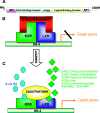Minireview: liver X receptor beta: emerging roles in physiology and diseases
- PMID: 19074550
- PMCID: PMC5419308
- DOI: 10.1210/me.2008-0398
Minireview: liver X receptor beta: emerging roles in physiology and diseases
Abstract
Liver X receptors, LXRalpha and LXRbeta, are nuclear receptors belonging to the large family of transcription factors. After activation by oxysterols, LXRs play a central role in the control of lipid and carbohydrate metabolism as well as inflammation. The role of LXRalpha has been extensively studied, particularly in the liver and macrophages. In the liver it prevents cholesterol accumulation by increasing bile acid synthesis and secretion into the bile through ATP-binding cassette G5/G8 transporters, whereas in macrophages it increases cholesterol reverse transport. The function of LXRbeta is still under investigation with most of the current knowledge coming from the study of phenotypes of LXRbeta-/- mice. With these mice new emerging roles for LXRbeta have been demonstrated in the pathogenesis of diseases such as amyotrophic lateral sclerosis and chronic pancreatitis. The present review will focus on the abnormalities described so far in LXRbeta-/- mice and the insight gained into the possible roles of LXRbeta in human diseases.
Figures
References
-
- Chawla A, Repa JJ, Evans RM, Mangelsdorf DJ2001. Nuclear receptors and lipid physiology: opening the X-files. Science 294:1866–1870 - PubMed
-
- Giguere V, Hollenberg SM, Rosenfeld MG, Evans RM1986. Functional domains of the human glucocorticoid receptor. Cell 46:645–652 - PubMed
-
- Kumar V, Green S, Stack G, Berry M, Jin JR, Chambon P1987. Functional domains of the human estrogen receptor. Cell 51:941–951 - PubMed
-
- Luisi BF, Xu WX, Otwinowski Z, Freedman LP, Yamamoto KR, Sigler PB1991. Crystallographic analysis of the interaction of the glucocorticoid receptor with DNA. Nature 352:497–505 - PubMed
-
- Graupner G, Wills KN, Tzukerman M, Zhang XK, Pfahl M1989. Dual regulatory role for thyroid-hormone receptors allows control of retinoic-acid receptor activity. Nature 340:653–656 - PubMed
Publication types
MeSH terms
Substances
LinkOut - more resources
Full Text Sources
Molecular Biology Databases


